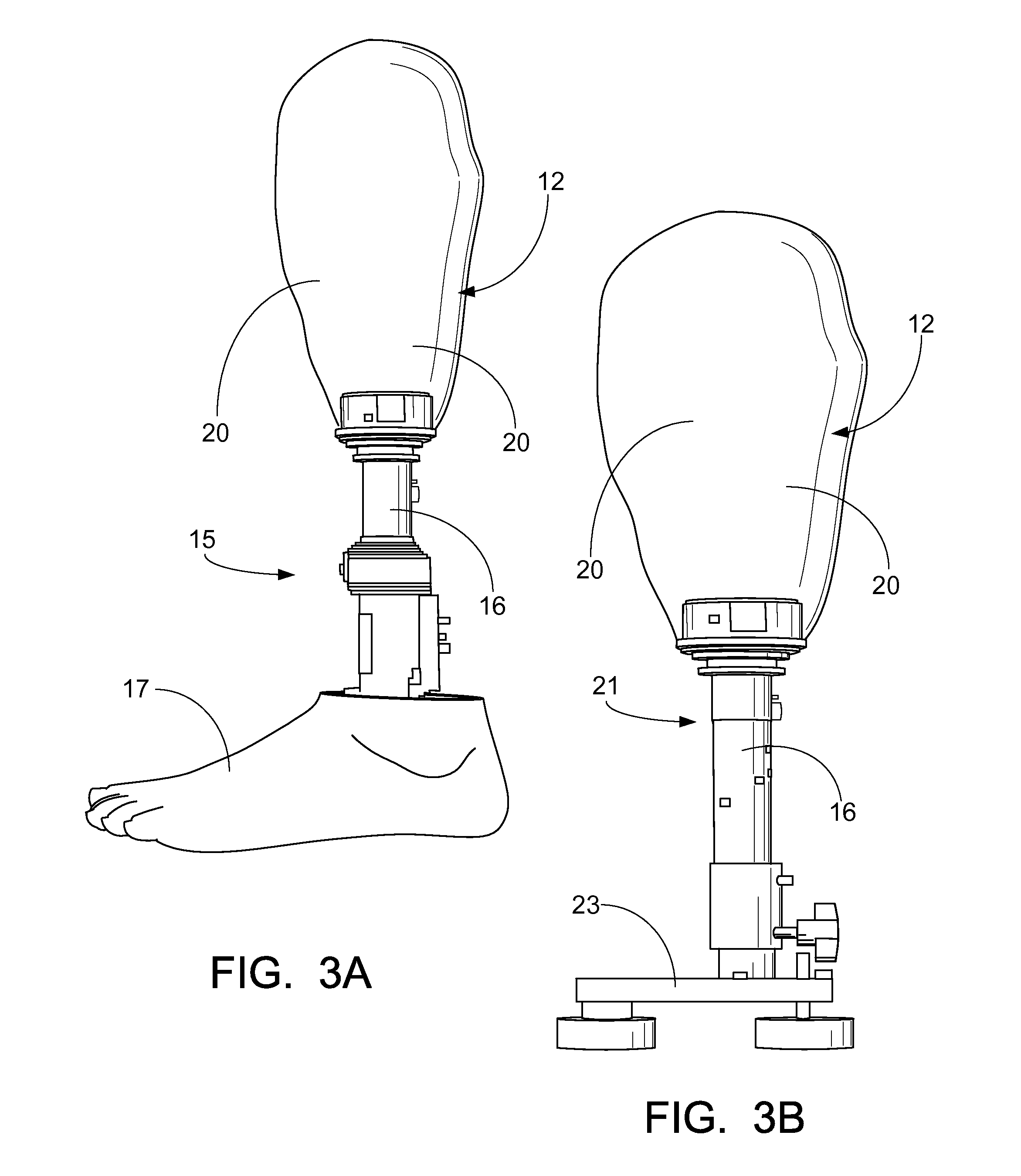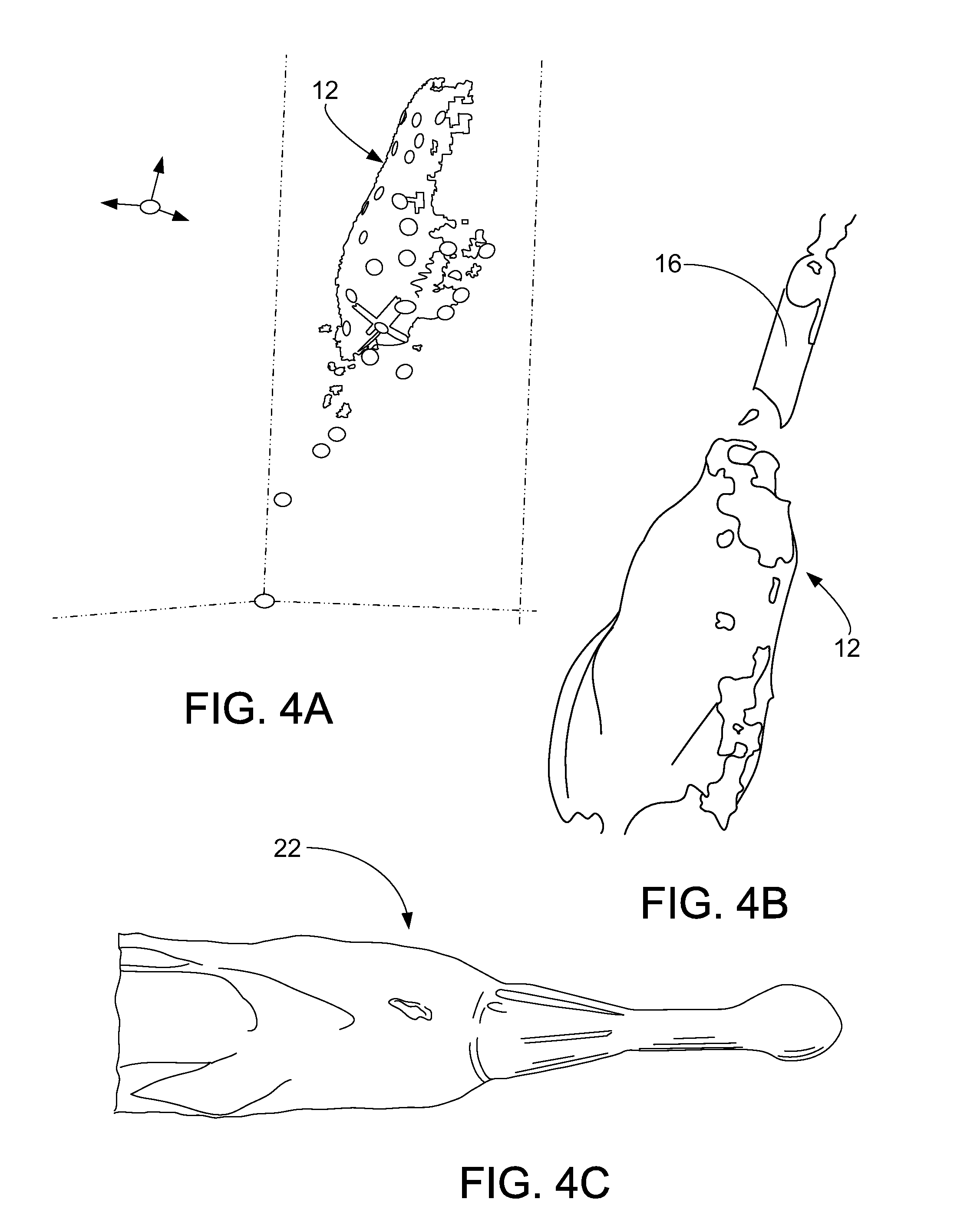Method of digitally constructing a prosthesis
- Summary
- Abstract
- Description
- Claims
- Application Information
AI Technical Summary
Benefits of technology
Problems solved by technology
Method used
Image
Examples
Embodiment Construction
[0037]FIGS. 1 through 12 illustrate a preferred embodiment of the method or process of constructing a prosthetic limb through a digital format, while FIGS. 13 and 14 illustrate in Flow Chart format the steps of Smoothing the prosthetic limb (3D socket) and Sealing the prosthetic limb (3D socket) respectively.
[0038]Before reference is made to the Figures, in general, this technique of achieving a positive mold for a test socket in a digital format is by scanning the residual limb. The first step would be to choose the materials and tools needed for measuring a patient. Again, one would need to prepare suspension of the prosthesis (silicone liner, foam or other types of socket designs); a scanner; a laptop; reflective dots; measuring tools such as a length stick M / L gauge tape measure, etc. The method may vary by which Distal Device used.
[0039]After preparing oneself with the items one would need to take a digital image of a residual limb, the individual would use a scanner to capture...
PUM
| Property | Measurement | Unit |
|---|---|---|
| Strength | aaaaa | aaaaa |
| Content | aaaaa | aaaaa |
Abstract
Description
Claims
Application Information
 Login to View More
Login to View More - R&D
- Intellectual Property
- Life Sciences
- Materials
- Tech Scout
- Unparalleled Data Quality
- Higher Quality Content
- 60% Fewer Hallucinations
Browse by: Latest US Patents, China's latest patents, Technical Efficacy Thesaurus, Application Domain, Technology Topic, Popular Technical Reports.
© 2025 PatSnap. All rights reserved.Legal|Privacy policy|Modern Slavery Act Transparency Statement|Sitemap|About US| Contact US: help@patsnap.com



